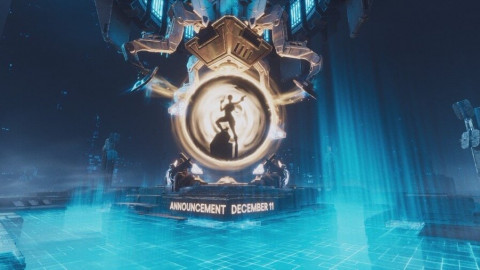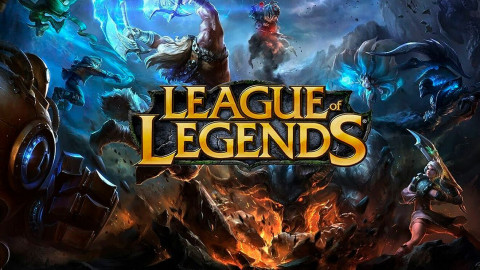"Death has ravaged our world and the balance that sustained us has been lost. We feared this day would come when the lands are ruined and the champions of the light can no longer save those in need. But I will. For I wield the power they cannot, and the new army of the dead shall rise at my command. All who threatened the balance, beware."

Greetings, fellow Nephalem! This time we're going to take a look at the Necromancer, Diablo III's newest class revealed at BlizzCon 2016.
Necromancer was a unique character with various builds such as Explosionmancer, Summonmancer, Bonemancer, and Novamancer. The impression left by Necromancer was so intense that the fans criticized Blizzard for releasing the Witch Doctor when the 2011 Diablo III alpha version revealed the poison and summoning theme.
Over time, Witch Doctor also earned his own favor, but users kept asking for Necromancer. So, finally, after about 17 years, we are about to play Necromancer, again.
So what was so appealing about Necromancer? We will take a look at it from the first Diablo series and also from the next generation’s Necromancer, to be released in 2017.

Diablo I : No Necromancer. Though, there was Golem
Diablo I was released as an action, role-playing, hack and slash game in 1996, and it featured three classes: Warrior, Rogue, and Sorcerer. There was no such class as Necromancer at that time.
However, Summon Golem, one of Necromancer's distinctive skills, can be found in Diablo I. It appears on the spell page four which is on the same page as Apocalypse. Its appearance was a little awkward, and the combat capability was inferior. However, I think that it is a meaningful skill just because it was the first summoning skill that appeared in the Diablo series.


If you take a closer look at the spells on page 4, you can see another familiar name: Bone Spirit. In Diablo II, it appeared as the Necromancer's ultimate Bone skill. In Diablo I, it is theoretically possible for even the Warrior to cast this spell because it was possible to acquire any spell regardless of the class as long as the required status was met.
Bone Spirit in Diablo I had percent damage, but it was effective only for a single target, so players didn't use it often since other spells like Chain Lightning or Fireball were more versatile. This was the same with Diablo II because of excessive mana cost. However, it was used as a poking skill in PvP for its traceable function.

Diablo II : From Explosionmancer to Bonemancer
Diablo II was released in 2000 and it greatly expanded the series scale-wise. Diablo II had 4 Acts and 3 difficulties with 6 main quests in each Act that lead players to chase after the Dark Wanderer.
While Diablo I only had Warrior, Rogue, and Sorcerer, Diablo II had 5 different classes, each with distinctive backgrounds and unique abilities. Necromancer especially had unique skill trees that appealed to many Diablo fans, from using corpses to attack to summoning Skeletons and Golem.

Though Necromancer's melee attack can deal more damage than his summoned creatures, I enjoyed watching the Skeleton's appearance, which gradually changed as more skill points were invested.
However, the presence of Necromancer was not so great in the early days of Diablo II. The Sorceress's Frozen Orb was so overpowered that there was no room for Necromancer to play in PvE or PvP at that time. Sorceress was even equipped with the Ume's Lament that was originally created for Necromancer to use.

The Renaissance of Necromancer began with the release of the Diablo II expansion set: Lord of Destruction(LoD). It featured elite items, new set items, and most importantly: the rune word system. The so-called Summonmancer had the inherent limitation that it was unable to focus the damage of the summoned creatures. This problem had been quickly solved by introducing the rune word Enigma which enabled teleport regardless of class.
Also, other rune words like Pride, Beast, and Bramble, which enabled Aura effects, can raise both the damage and survivability of summoned creatures. Though many players played Summonmancer just for fun, I loved the concept of summoning. Filling the screen with a bunch of Skeletons and leading the army felt fascinating.

And then there was Novamancer. A lot of players had the desire to sweep the field with Poison Nova, the ultimate skill of the poison tree, and it became a reality in the LoD expansion with the addition of items that lowered monsters' poison resistance or increased poison damage.
Trang-Oul's Claws and Wing were the core items, along with Death's Web Wand to reduce the target’s poison resistance; this provided some basis for the Novamancer. Players liked the easiness of its mechanism: just scattering Lower Resist and use Poison Nova.

However, I can reliably say that Bonemancer was the pinnacle of Necromancer. Bone tree skills were classified as Magic, so it was impossible to reduce Bone skill damage with normal element resistance. With this, Necromancer used Teeth and Bone Sprints as poking skills, and the fast shooting Bone Spear to finish off targets in PvP.
As mentioned earlier, rune word Enigma enabled players to use teleport, so there was a trend in PvP of directly shooting Bone Spirit in close proximity to the opponent. Players also could see Hammerdin or Wind Druid being used for PvP in a similar fashion.
In Diablo II, it was fun to try different class builds, but eventually, the final content resulted in PvP. I think that's why the classes who had shown good performances in Blood Moor last longer in our memory.

Diablo III : Now you can give orders to summoned creatures
According to the announcement at BlizzCon 2016, Necromancer is designed to use Bones and blood-related skills rather than poison, which would overlap with Witch Doctor's theme. Though it is said that players will be able to use poison skills through rune selection.
As far as we know, there are eight kinds of skills, including Corpse Explosion, Summon Skeletons, Bone Spear, Decrepify, Siphon Blood, Blood Rush, Blood Golem, and Army of the Dead. It is noteworthy that this selection has succeeded the representative skills beloved in Diablo II, while also being equipped with completely new types of abilities at the same time.

Among them, Summon Skeletons takes up one skill slot but has both an attack command and summoning functions. If you put it in the skill slot, 7 melee attack Skeletons, and 3 magical Skeletons are automatically summoned. The important point here is that when you attack a target, the melee Skeletons rush towards them and assault.
This is a big difference from the Witch Doctor. Also, if skill runes allow you to change the type or number of the Skeletons, you may be able to play on a scale that is equal to that of the former Summonmancer in Diablo II.
Most of the builds in Diablo III, especially after the introduction of the Greater Rift, have a configuration that requires some skills to be used periodically to activate the reinforcement effect. As a set item with unique themes such as bones and blood is being prepared, Necromancer can likely either use the Skeleton Attack to gain reinforcement, or, conversely, overlay buffs with other skills and then use Skeleton Attack.
▲ We might see some kind of Summon Skeletons enhancing items in the new DLC
Blood Golem was also featured briefly in the developers' discussion. This means that Necromancer in Diablo III can summon a Golem separately from Skeletons. They only showed the Blood Golem modeling; the Iron, Clay, and Fire Golem in Diablo II are likely to be applied as skill runes in Diablo III.

On the other hand, there are some areas of concern. Like how will Blizzard apply Corpse Explosion in the Greater Rift? Although it can be solved by introducing a passive skill or skill rune that automatically creates corpse, it is still unknown how this type of skill will fit in with the current Greater Rift structure.
When the Crusader was first introduced, its inefficient combat performance was big trouble for the players. It proved that even if a skill looks fancy on the surface, it won’t be popular unless it proves useful in the main content of the game, which at this time is the Greater Rift.
▲ How will Blizzard apply Corpse Explosion in Greater Rift?
Nevertheless, I'm very excited to have Necromancer as a new class in Diablo III. Through this change, it has been confirmed that it is possible to launch a class even if the theme overlaps with the existing class. So it means that there is room for future additions such as Amazon, Assassin, and Druid.
If Blizzard succeeds in building DLC as its new profit model starting with the Necromancer, we might be able to continue to see new classes, new areas, or expansion stories in the future.
▲ Can it expand the reputation of Necromancer from Diablo II?
Sort by:
Comments :0







